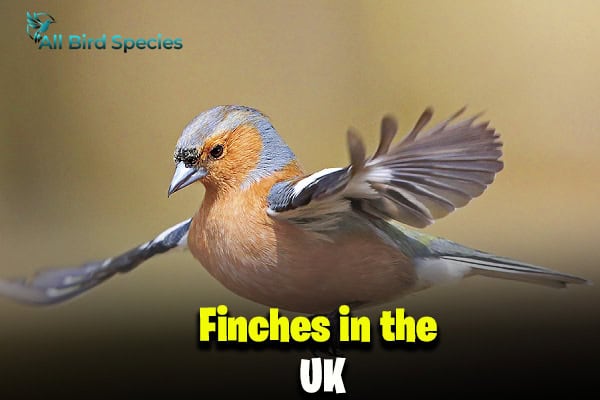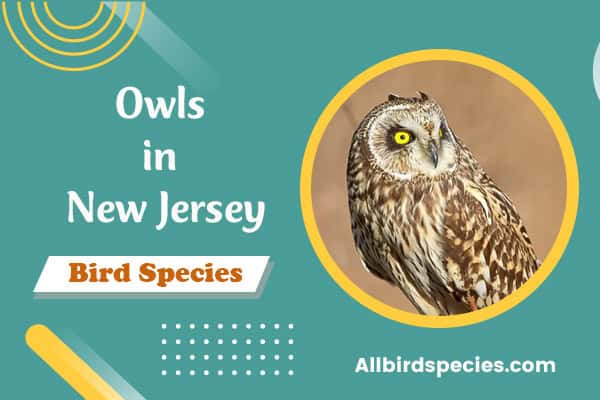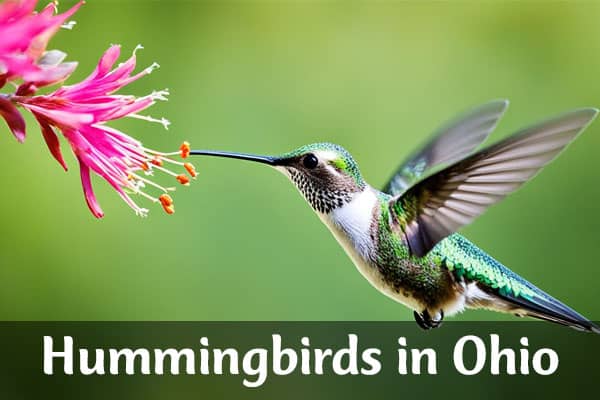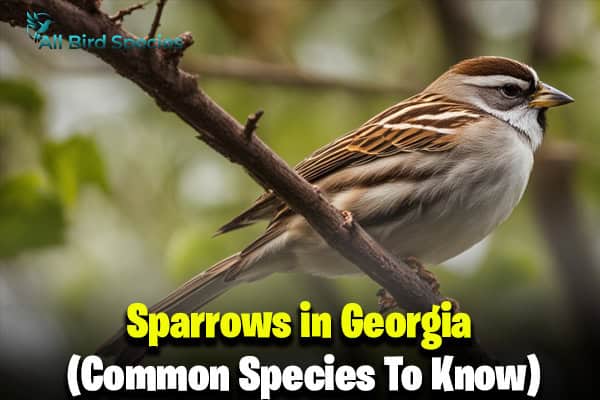14 Species of Finches in the UK (With Pictures)
Ever wondered why some finches are easy to spot in your garden while others are hard to find? This guide will show you the unique Finches of the UK. It will make your birdwatching more exciting and help you appreciate these lovely birds more.
From the well-known Chaffinch to the rare Scottish Crossbill, each finch has its own special qualities. Let’s explore 14 different finch species together. This will make you more skilled and attentive in spotting birds. Get ready to learn more about the finches in the UK!
Introduction to Finches in the UK
The UK is home to many finch species, each with its unique traits and colors. These birds make birdwatching in the UK exciting. Some finches love gardens, while others prefer the quiet of the woods. You might see garden birds like the chaffinch and greenfinch in your garden, adding life to your space.
Finches play a key role in UK ecosystems. They eat seeds and insects, keeping their habitats balanced. Their calls and songs have made them popular companions for centuries. This guide will take you on a journey to discover the finch species you can find in your area.
1. Chaffinch
The chaffinch is a lovely bird for your garden, known for its bright look and sweet song. It brings joy to gardens, parks, and woodlands across the UK. Learning about its looks and where it lives can make birdwatching more fun.

Identification Features of the Chaffinch
It’s easy to spot a chaffinch. Males have a slate grey head and bright orange cheeks with white wing bars. Females are more brown but also show off those white wing bars. Both have a silver bill in summer, making them easy to recognize.
Habitat and Distribution
Chaffinches live in many places, like gardens, parks, and woods. They like to look for seeds, fruits, and bugs to eat. They’re found all over the UK, so bird lovers and casual watchers often see them.
2. Bullfinch
The Bullfinch is a bird that catches the eye with its beauty and charm. Birdwatchers love to see this rare bird because of its unique look and how it eats.

Identification Characteristics
Males have a bright pink breast and a grey back. They also have a black cap on their head. Females are less flashy, with soft colors. These features make spotting the Bullfinch fun.
They have strong, thick bills perfect for eating their food. This makes them stand out.
Feeding Habits and Diet
Bullfinches eat the buds of fruit trees and flower shoots, not seeds. This shows how adaptable they are. They like to eat in pairs or small groups, often in woods and big gardens.
Seeing these birds eat can be a special moment. They are hard to spot, making it even more exciting.
3. Brambling
The brambling is a delightful sight among winter birds in the UK. They appear during the colder months. Their bright colors stand out against the winter landscape, making them a joy to watch.

Identification and Appearance
Bramblings, known as Fringilla montifringilla, have unique features that make them stand out. Male bramblings are easy to spot with their:
- Gray-blue heads
- Warm orange breasts
- Dark wings with distinctive orange bands
Females are less vibrant but still have features that help identify them. They have a more muted look, often appearing in shades of brown.
Where to Spot Brambling
Bramblings live in beech woodlands in winter but often visit gardens and parks. They’re often seen with local chaffinches, creating a colorful scene. Look for them eating seeds, especially beech mast, to find them in different spots.
| Feature | Male Brambling | Female Brambling |
|---|---|---|
| Head Color | Gray-blue | Light brown |
| Breast Color | Warm orange | Brownish-orange |
| Wing Color | Dark with orange bands | Dark with muted colors |
4. Red Crossbill
The crossbill, known as Loxia curvirostra, is a unique bird. It has a crossed beak that helps it eat seeds from conifer cones. This shows how birds adapt to their environment.

Identification and Beak Structure
Males are bright red, while females are greenish-brown. This difference helps tell them apart. Their beaks cross over, letting them eat seeds others can’t. They are chunky and colorful, making them fun to see.
Preferred Habitat
Crossbills live in conifer woodlands, where they find plenty of food. These areas are full of cones that are great for them. You’ll hear their calls and see them in groups. They make the forest feel alive and magical.
5. Scottish Crossbill
The Scottish Crossbill (Loxia scotica) is a special bird in the UK, being the only one native to the area. It lives in places that fit its eating habits and where it can nest.
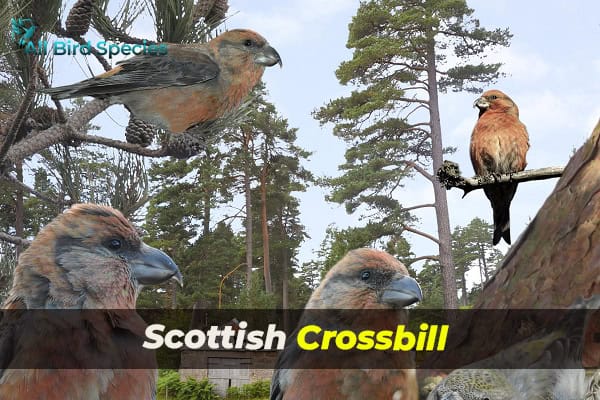
Identification and Differences
It’s hard to tell the Scottish Crossbill apart from the common Crossbill. It’s a bit smaller and has a special bill for opening pine cones to get seeds. You might need a close look to see the color and size differences. Men have bright red feathers, while women have more natural colors.
Habitat and Conservation Status
These finches in the UK live mainly in the dense Scots pine forests of North-East Scotland. These forests give it the pine seeds it needs to eat. But, the Scottish Crossbill is at risk because it has a small population and needs a specific home. Protecting its habitat and managing the forests is key to keeping this finch around.
6. Parrot Crossbill: Britain’s Rarest Finch
This parrot crossbill are rare finch in the UK. It’s hard to find and has unique looks. Its strong build and eye-catching appearance make it a favorite among birdwatchers.
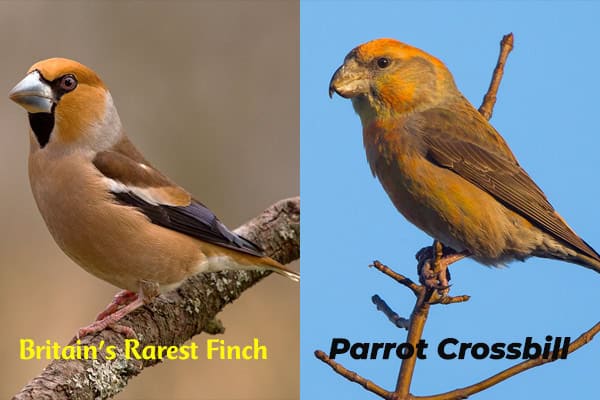
Physical Characteristics
The parrot crossbill has some special traits. Key physical characteristics include:
- Size: This finch is bigger than many others.
- Beak: It has a strong, curved beak for opening pine cones.
- Coloration: Males are bright red, while females are more yellowish.
- Vocalization: It has a deep, melodic song, unlike other finches.
Where to Find Them
Finding this bird can be tough. They live in:
- Pine forests in Scotland and northern England.
- Areas with lots of coniferous trees, where they eat.
Birdwatchers should go to these places in winter or after big weather changes. These times might make the parrot crossbill easier to see.
| Characteristic | Details |
|---|---|
| Size | Larger than most finches |
| Beak | Strong, curved for seed extraction |
| Male Coloration | Bright red plumage |
| Female Coloration | Yellowish with subtle hues |
| Vocalization | Deep and melodic song |
7. Twite
The Twite (Carduelis flavirostris) is a small finch that loves the coast, especially in Scotland and Northern Ireland. It’s a bird that birdwatchers and nature lovers find interesting. Let’s explore what makes the Twite special among coastal birds.
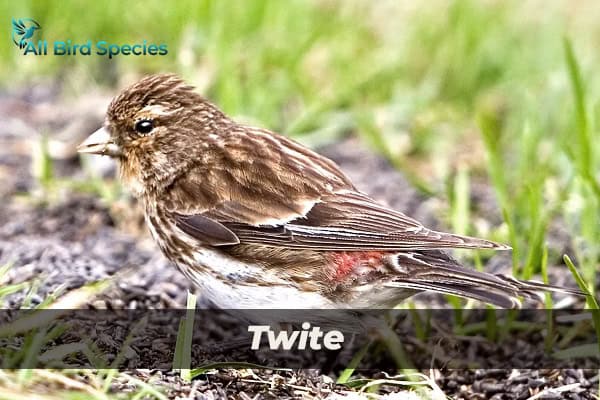
Identification Traits
Twites have brown feathers that blend well with their surroundings. In summer, males show off a pinkish rump. Their short tails and unique beaks help tell them apart from other finches in the UK.
Feeding Preferences and Behavior
Twites mainly eat seeds all year round. They like to forage in fields and moorlands. Their eating habits show how well they fit into the coastal ecosystem. Watching Twites can teach us about the health of coastal areas. They are key to keeping these environments balanced.
8. Linnet (Housefinch)
The linnet, also known as the housefinch, is a bird that many nature lovers in the UK enjoy. It’s known for its charming look and unique features. These make it stand out among other finches.
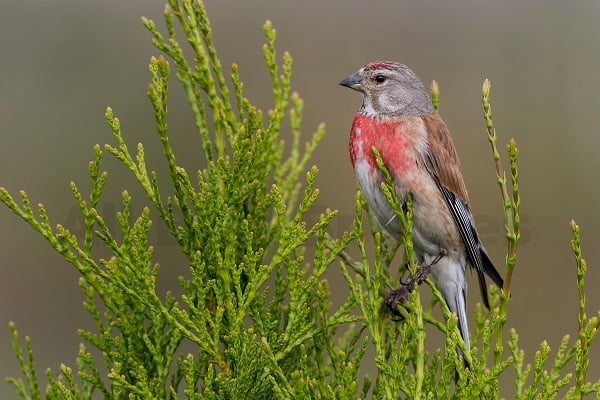
Identification Features
Male linnets have a grey head and a beautiful pinkish-red breast. This makes them a bright spot in any field. Females have a more subtle look with brown streaks, helping them blend in with their surroundings. They are small and slender, matching their lively nature.
Habitat and Current Population Status
Linnets live in lowland farmland, eating seeds from plants and crops. They can adapt to different places, which helps them spread out. But, their numbers are going down because of changes in farming that affect their homes. Efforts to protect their living spaces are important for their future.
| Feature | Male Linnet | Female Linnet |
|---|---|---|
| Head Color | Grey | Brown |
| Breast Color | Pinkish-red | Light brown streaks |
| Size | Compact | Compact |
| Habitat | Lowland Farmland | Lowland Farmland |
| Population Status | Stable with Decline Risks | Stable with Decline Risks |
9. Pine Siskin
The siskin is a small finch that catches the eye with its bright colors and lively actions. It has vibrant yellow-green feathers and a black crown. You can find it in woods and gardens, especially when food is scarce.

Identification Tips
To spot a siskin, look for these key features:
- Size: It’s a small finch, about 4.5 to 5 inches long.
- Coloration: It has bright yellow-green feathers and a black cap on its head. Males are more colorful than females.
- Behavior: They move quickly and are often seen in groups.
Feeding and Nesting Habits
Siskins eat mainly seeds, especially from alders and birches. They play a big role in spreading seeds around. In the spring, they build small nests high up in trees for their babies.
| Characteristic | Description |
|---|---|
| Size | 4.5 to 5 inches |
| Coloration | Yellow-green with black crown |
| Feeding Habits | Seeds from alders, birches, and other trees |
| Nesting | High in tree canopies for safety |
Finches in other Regions:
10. Greenfinch
The greenfinch, known as Chloris chloris, brightens gardens across the UK with its vibrant colors. These birds are loved for their bright yellow-green feathers. They are a common sight in gardens, eating seeds and adding beauty to the area.
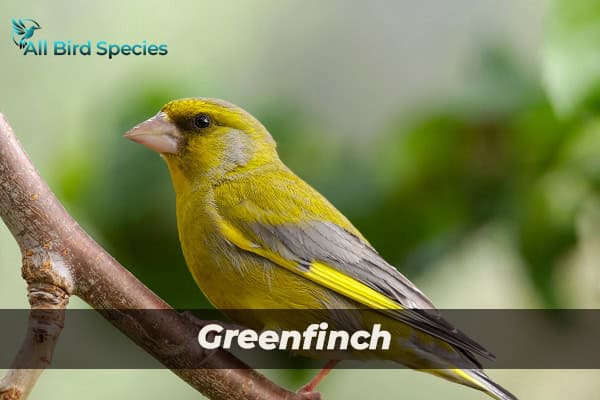
Identification Characteristics
These Male green finches of the UK have brighter feathers than females. They have strong, yellow-tipped wings and tails. Their powerful bills help them crack open tough seeds, like sunflowers. Look for these features to spot these colorful birds:
- Color: Bright yellow-green body with darker wings and a distinctive yellow stripe.
- Size: Medium-sized finch, about 6.5 to 7.5 inches long.
- Bill: Strong, conical bill ideal for seed-cracking.
- Song: A cheerful, twinkling call often described as a series of short notes.
Greenfinches are often seen in gardens and parks, adding life to the area. Sadly, their numbers are decreasing due to diseases. But they still thrive in many places, making them a joy for birdwatchers.
| Feature | Description |
|---|---|
| Color | Vibrant yellow-green with contrasting darker wings |
| Size | 6.5 to 7.5 inches |
| Bill type | Strong and conical for seed cracking |
| Habitat | Gardens, parks, and urban areas |
Next time you’re in your garden or a nearby park, look out for these beautiful birds. Their presence brings color and life, making any outdoor space more vibrant.
Wrapping Up…
The UK is home to a wide variety of finches, showing the area’s rich biodiversity. From the Greenfinch’s bright colors to the Crossbills’ unique shapes, these birds make the landscape more beautiful. They also play important roles in their environments.
Learning about these finches’ looks, where they live, and how to protect them deepens your appreciation for them. Your birdwatching can help spread the word and support their protection. Simple actions like using the right feeders and keeping their homes safe can help keep these finches around.
As you go birdwatching, look for the different finch species. Each one adds its own beauty and charm to the experience. It invites you to explore the natural beauty of the UK.

